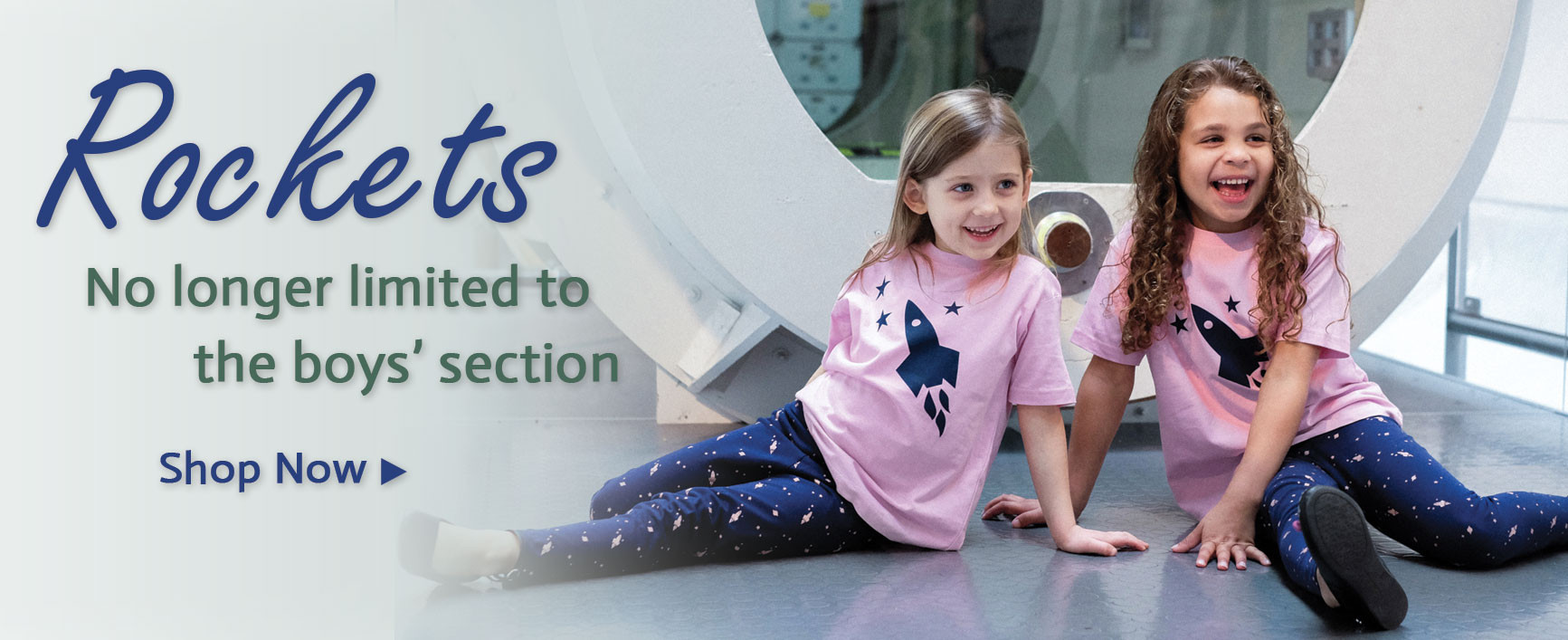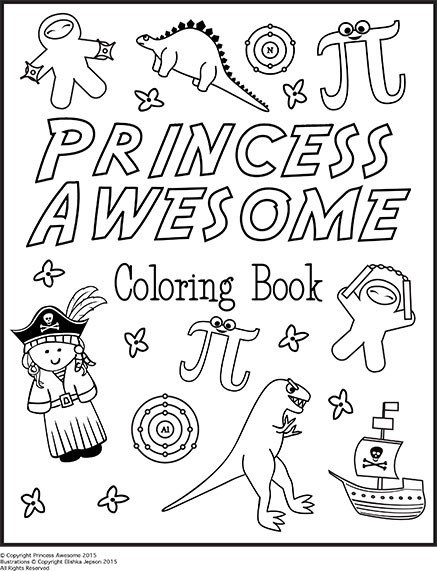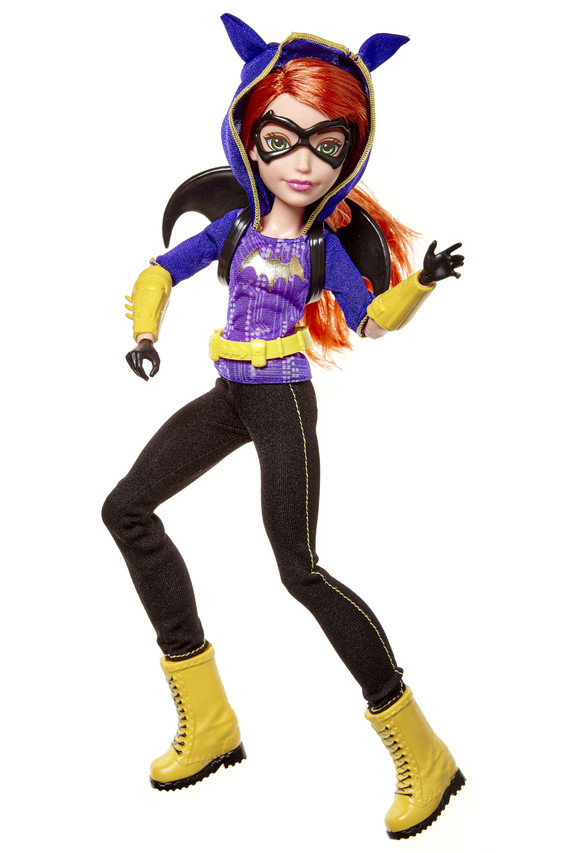As creatives, it’s our responsibility to avoid gender stereotyping in our work. And some designers have gone further, and begun actively working against it. In this post, we highlight seven designs that subtly defy outdated ideas and present the world in a fresher, more nuanced way.
01. Budding Stem

Founded by Jennifer Muhm and Malorie Catchpole, Budding Stem is dedicated to clothes for girls that celebrate science, space, dinosaurs, chess, and other things traditionally associated with boys.
The idea came about when Muhm’s daughter told her she’d wanted to go to a fancy dress party as an astronaut... but changed her mind after looking at a catalogue and only seeing boys in astronaut costumes.
Other designers of science-themed clothes for girls include Handsome in Pink, Svaha and Sewing Circus.
02. Princess Awesome

Defying stereotypes doesn’t mean that girls can’t be girls, and boys can’t be boys: it’s more about giving kids options, and not forcing them into predefined boxes.
One of the most interesting takes on this concept comes from Princess Awesome, founded by Rebecca Melsky and Eva St. Clair. They believe that “girls shouldn’t have to decide between dresses and dinosaurs, or ruffles and robots”. So their clothing designs mix everything up, to let girls decide exactly what they want to be.
There’s also a Princess Awesome colouring book, that includes silly maths jokes and even a small taste of writing computer code. It seems this stereotype-slaying brand could go in many different directions, and we can’t wait to see what they come up with next.
Daily design news, reviews, how-tos and more, as picked by the editors.
03. Apple icons

To perform its function, an icon needs to be simple and instantly understandable. But that doesn’t mean it needs to be sexist.
Google and Facebook have both recently had a go at updating their icons for the 21st century, and in August Apple joined the party, with a new range of inclusive icons.
More than 100 new and redesigned emoji characters will be made available to iPhone and iPad users this autumn with iOS 10, with multiple gender options including athletes and professionals, as well as more diverse families.
04. Sam Farmer beauty products

When shopping for deodorant for his teenagers, Sam Farmer couldn’t believe the lengths brands were going to reinforce gender stereotypes.
Pink bottles with slogans like ‘Play it Sexy’ for girls, and grey-steel bottles with names like ‘Extreme Power’ for boys, seemed like something out of the dark ages to him. So he decided to create an eponymous line of hygiene products for both sexes in simple, gender-neutral packaging.
The brand’s success proves that you no longer need to indulge in outdated caricatures to target either gender; just nice designs and good products.
05. Toca Boca

Toca Boca explicitly designs its apps to be gender-neutral, from avoiding stereotypical colour schemes to thinking about more subtle signals they might be sending out via aesthetics and functionality.
For example, most motor racing games are aimed at boys and feature only male drivers. Toca Cars offers the choice of a boy or a girl as the main playing character, and reverses gender expectations in a number of ways, such as the older sister being more adventurous and the younger brother having a more giggly voice.
Similarly, while most hairdressing games are excessively ‘girly’ in tone and presentation, Toca Hair Salon is more reminiscent of a hip, modern day salon, featuring both male and female customers, and even some completely androgynous models. As a result, research by testing firms Kids Industries found that both boys and girls enjoyed playing the game.
06. Mattel/DC Super Hero girls

For decades, girls have had female superheroes to look up to, but they also reinforced a number of regressive stereotypes about how they should dress. So it’s great to see the Mattel dolls based on DC Comics’ Super Hero Girls (a series that reimagines characters like Wonder Woman and Batgirl as high school students) have more realistic body types, less sexualised costumes, and flat boots rather than impractical high heels.
Toy designer Christine Kim’s team based the ‘strong and toned’ body shapes on gymnasts, dancers, and basketball players as models, and consulted feminists, bloggers and academics before finalising the designs.
07. Buffalo: The Name Dropping Game

Sometimes deep-seated gender, racial and religious stereotyping can’t just been ‘designed out’, it has to be actively challenged by parents, kids and teachers. This clever card game from Tiltfactor Lab, a game R&D Lab at New York’s Dartmouth College, does just that.
The idea is simple: you draw two cards, one an adjective and one a noun, that describe a person – such as "multiracial + superhero" and "female + visionary." You then have to name someone who fits that description. It’s not always easy, but that’s kind of the point. Psychological testing carried out at the college showed that game was able to reduce prejudice and engender more positive views of diversity among players.

Tom May is an award-winning journalist specialising in art, design, photography and technology. His latest book, The 50 Greatest Designers (Arcturus Publishing), was published this June. He's also author of Great TED Talks: Creativity (Pavilion Books). Tom was previously editor of Professional Photography magazine, associate editor at Creative Bloq, and deputy editor at net magazine.
